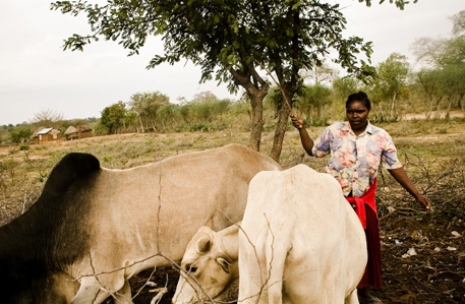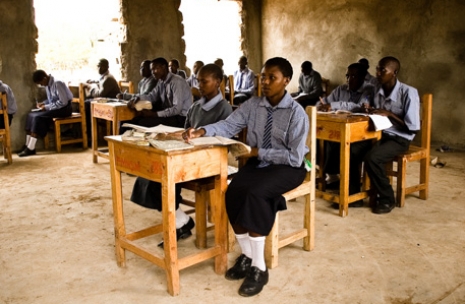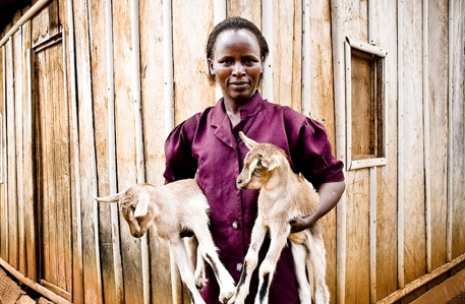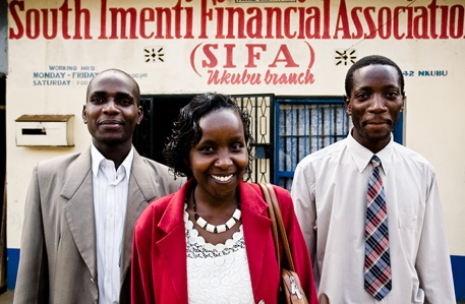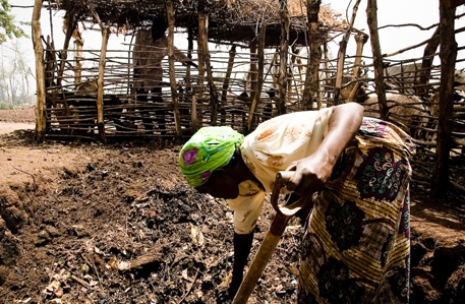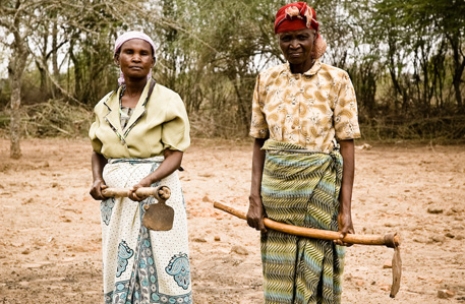Donors Ourselves
Private philanthropy is one of the key institutions that rural communities need to thrive. When coupled with strong local leadership, a vision for the future, and individual initiative, philanthropic investment can be a catalyst for positive change.
Outside philanthropies such as major national foundations have a responsibility to invest in rural communities. But it's also true that rural communities can invest in themselves to build a stronger, more sustainable future. Donors Ourselves promotes private and public policies that create healthy communities through local and national philanthropy
The Book and Documentary
All communities, no matter how poor they might seem, have assets they can invest in themselves. The Donors Ourselves book and documentary tell the story of how people in two very different places – East Africa and East Tennessee – built on their assets of leadership, local knowledge, and capital to create a brighter future for their communities.
The project is the creation of Rural Strategies' Community Philanthropy Initiative, a four-year project (2003-2007) supported by the Ford Foundation. The initiative documented rural development philanthropy as practiced by the East Tennessee Foundation and the Kenya Community Development Foundation. In looking beyond international borders at the experiences of two unique regions, the project identifies key philanthropic principles that have informed and guided the growing movement of rural development philanthropy.
Watch the Documentary:
The half-hour video documentary captures the stories and experiences of communities in Kenya and Tennessee as they use simple but powerful philanthropic tools to develop on their own terms. The accompanying book of essays, "Donors Ourselves: Rural Development Philanthropy from East Tennessee to East Africa and Beyond," expands on these experiences to show how others can apply these principles to their own situations. The book also suggests how institutions like foundations can work effectively in partnership with communities.
Rural Development Philanthropy
While Rural Development Philanthropy may be a new concept to the formal philanthropic world, its roots run deep in our ethnic and rural heritage. Rural Development Philanthropy rises from a rural legacy in which people made decisions together, provided mutual support, and set the course for the community’s future. Examples abound:
• In Native American communities, the “ownership” of a river included the responsibility to feed the entire tribe.
• The best of town meetings in early New England – which still occur in some places today – were a gathering place where all voices could be heard and decisions surfaced from a rough-formed consensus into joint action.
• In rural African American communities, giving and lending circles have been an informal method not just for getting essential things done for families and communities but for offering views and support, and for quilting a shared vision about what can be if “we work together.”
In the early 20th century, urban philanthropy developed innovations such as community foundations and United Way organizations, while rural philanthropy continued in the more traditional forms of giving – from people to people or from people to the community.
At the same time, rural communities were being influenced by large industries with operations in rural areas, which exerted influence and control over those communities, creating “company towns.” Those industries often commanded the flow of primary resources in a place – jobs, wage levels and philanthropic giving. Large industries in small communities still exert a great deal of control, and if those industries close, it creates a vacuum in both community leadership and in philanthropy.
Over the last century, rural people increasingly left for opportunities in urban areas, which led to a massive out-migration of rural youth. As this trend has continued, more and more wealth has been leaving rural communities as it transfers from one generation to the next.
As large funders began to work in rural areas in recent decades, they often chose institutions – such as schools, community development corporations, libraries – as their local partners. Some rural places began building their own philanthropy but followed models developed in urban places. To get things done, they often formed partnerships with organizations that were not part of their rural geographic region.
Since 1990, federal rural policy has continued to focus on commodity price supports even as the character and economies of rural communities have been changing even more dramatically due to globalization, immigration, energy crises, and other challenges. This has resulted in a scarcity of funds available to address current rural community issues. Communities today have been forced to become more innovative and to refocus on internal assets.
The 1990’s saw an increase in the development of geographically-focused funds in rural areas at community foundations. New models of investing in rural places were being developed. Affinity groups and intermediaries began to organize around rural, raising visibility. Examples include RUPRI, Center for Rural Strategies, Aspen Institute Community Strategies Group, SRDI, Rural Funders’ Working Group, and the National Rural Funders Collaborative.
In 1993, the Ford Foundation initiated and funded the Rural Development and Community Foundations Initiative, which provided a place for community foundations to come together to share innovative ways to meet rural community needs.
These activities began to have an impact on research. It was clear that philanthropy was being used as a tool in ways that worked toward more democratic forms of philanthropy. This was seen by some as a challenge to the more traditional “donor-centric” model of philanthropy.
It is evident that a new type of organization is evolving – some refer to it as a “hybrid.” Some of these hybrids are rural community foundations that take on community and economic development initiatives; some are rural community development organizations that begin to grow philanthropic assets. Whatever form they take, these organizations are finding innovative approaches to working with, for and in communities. This is happening in rural areas with increasing frequency, and less often in urban settings.



